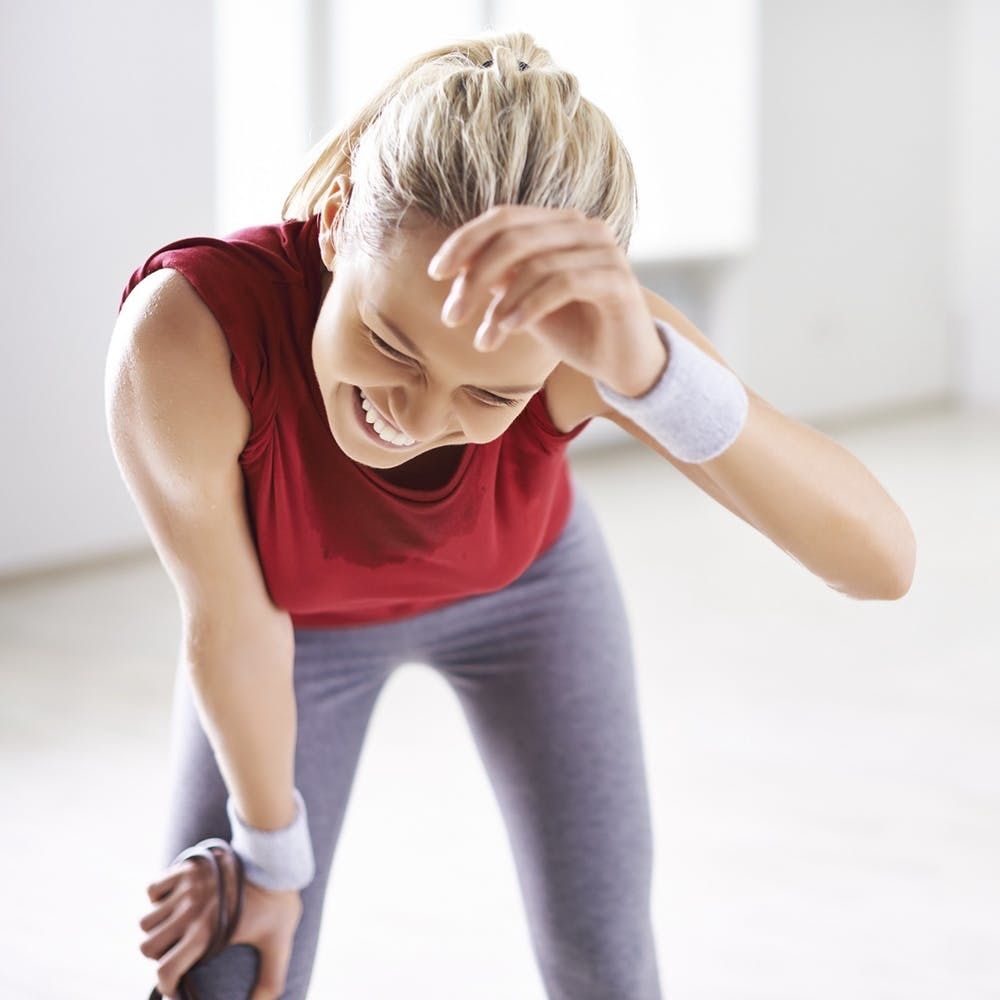If you’ve been paying any attention to the annual “new year, new you” hype, January probably sounds like the best month to start a fitness routine. But between the cold weather and the crowded weight rooms, this time of year can be a motivation killer for even the most dedicated gym rats. If you’re struggling with a fitness-related goal, don’t sweat it (yeah, we went there). Be proud of yourself just for starting something, and follow these tips to stick to your fitness resolutions in the new year.
1.Do whatever gets you there. Some trainers will tell you to remove all distractions from your workout — even music. It comes from concern for your safety, not exercise grinchiness, but unless you’re doing something that really requires focus, like sprinting or practicing heavy lifts, there’s no need to be so strict.
You want to check that Facebook notification? As long as you’re not keeping anyone from using the equipment, you do you. In the mood for a leisurely stint on the stationary bike with the latest page-turner from Emma Watson’s book club? Read on! Found a channel on the treadmill playing a Sons of Anarchy marathon this weekend? Let Jax Teller jumpstart your heart.
Give yourself permission to ignore the traditional “rules” and listen to your own motivations. Some days, you might jump on the elliptical to feel the burn, and other days you might decide it’s just a good place to catch up on podcasts. Remember that there’s no right or wrong way to get yourself moving — it only matters that you do it.
2. Make peace with the workouts that never happen. Despite our best intentions, life can get in the way of pretty much anything. There are those mornings when your bed feels extra comfy — and those evenings when your boss gives you that look that says, “Don’t even think about leaving on time.” Maybe you’re battling horrible period cramps, or trying to stay afloat during a bout of seasonal affective disorder. There’s a little voice in your head telling you all the reasons you should get to the gym, but your gut knows that it’s just not gonna happen — and you feel totally guilty about it.
When fitness feels like an obligation, it can add to your stress. If that’s the case, take some time off to figure out what’s going on. Did you spend all of last week at the gym? Check in for signs you have overtraining syndrome. Does the sight of the rowing machine fill you with dread? Try a totally different approach to cardio, like a group fitness class, or swimming laps.
Above all, try not to let those negative vibes follow you into your next workout. Whether it’s a day, a week, or even longer, a break in your routine is nothing to feel bad about.
3. Go at your own pace. HIIT, or high-intensity interval training, isn’t just a trendy acronym anymore — it’s the premise behind pretty much every new bootcamp class and YouTube routine on the market. Here’s the idea: You push yourself as hard as you can (that’s the high-intensity part) for a set period — say, four minutes — and follow with a short break, say 30 seconds (that’s the interval part).
HIIT is great for saving time: Most of these workouts can be completed in under 30 minutes, and you only need to do them two or three times per week. But this approach might not be ideal when you’re just starting out. The benefits of HIIT depend on getting your heart rate way, way up during the work periods, and unless you’re already in a good place with your cardio routine, that can suck for your body — and your motivation.
It’s okay to ease into exercise. If you have access to a gym, try walking on an incline on the treadmill until it feels challenging (or even hard), then use the handles to check your heart rate. Compare that number to your “target” training heart rate (where you get the best heart-health benefits) — you can find it online, but it’s generally between 50-70 percent of your maximum heart rate (AKA 220 minus your age) for moderate exercise. If you’re feeling pushed below that range, that’s totally fine! You can work up to it slowly.
4.At-home workouts are legit! There are a lot of reasons to skip the gym: They cost money, they’re usually busy when you need them most, and they’re full of “gym people.” Luckily, depending on your fitness goals, there’s a lot you can do without signing up for a membership.
For starters, if you have a four-legged pal, check out all the ways your dog can help you reach your fitness resolutions. Or, if you’d rather pair up with a human exercise buddy, try some partner YouTube workouts. You don’t need much equipment to break a sweat at home — plus, you can split any costs with your bestie.
If you want a little more accountability, try getting some digital motivation from nutrition and fitness apps. Trust us — if you hate notifications as much as we do, you’ll listen when your phone tells you it’s time for a few more push-ups.
What’s your most effective workout motivation rule? Share it with us @BritandCo!
(Photo via Getty)
